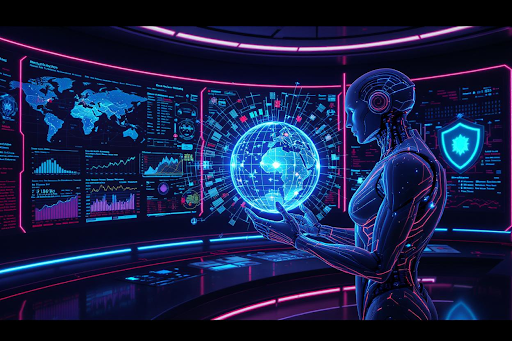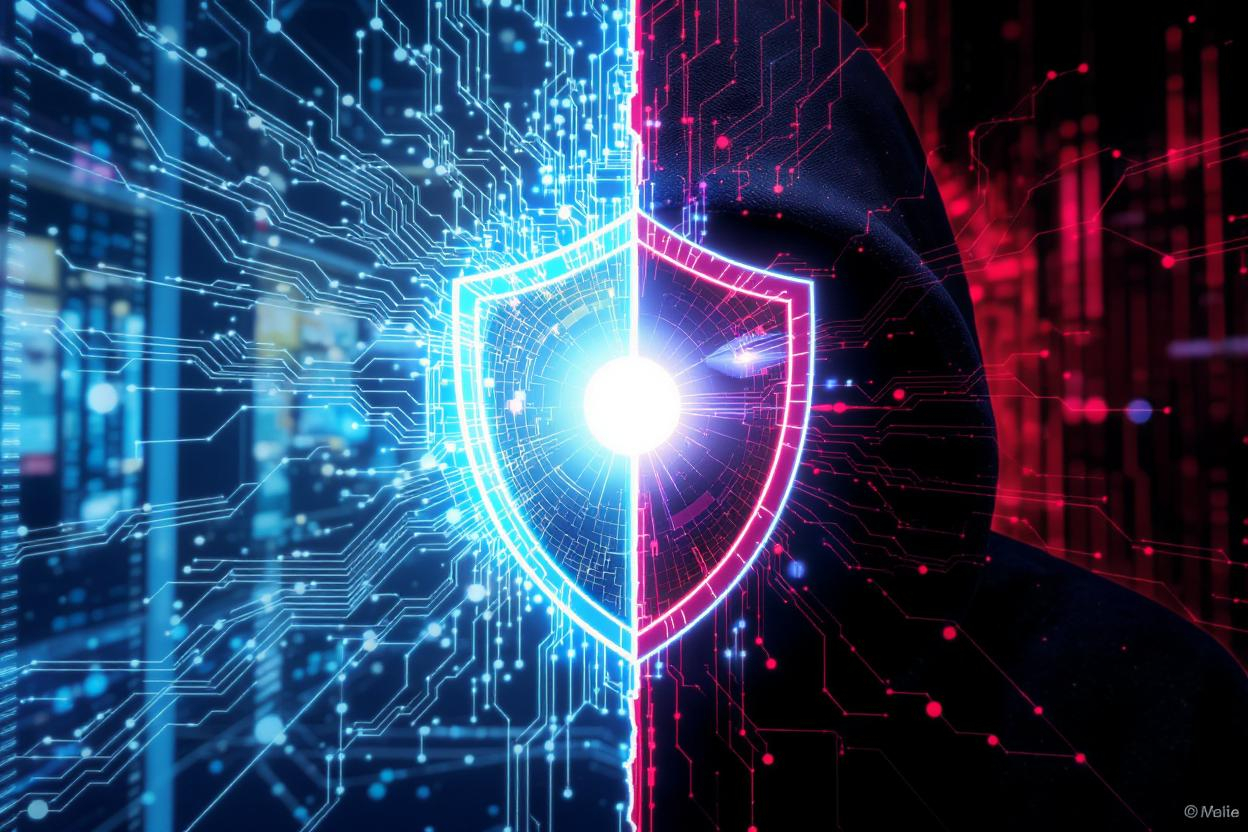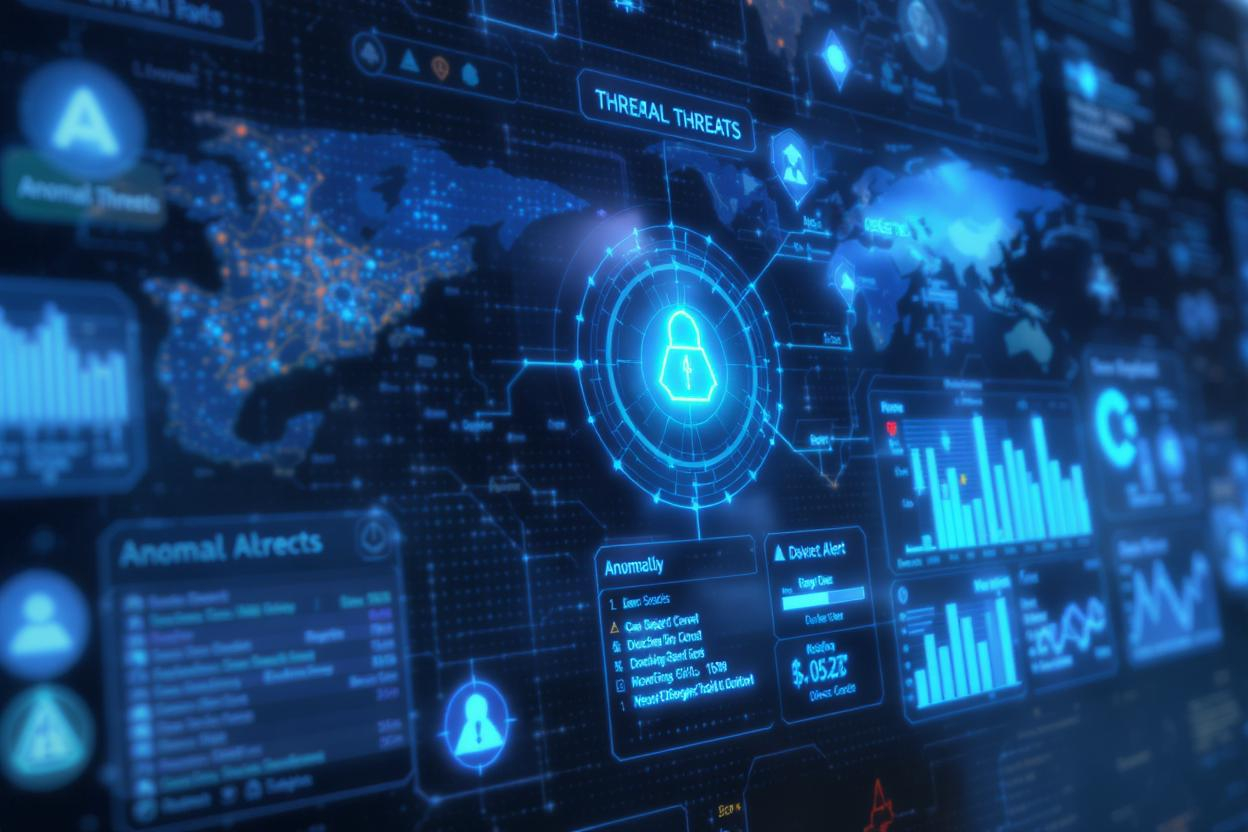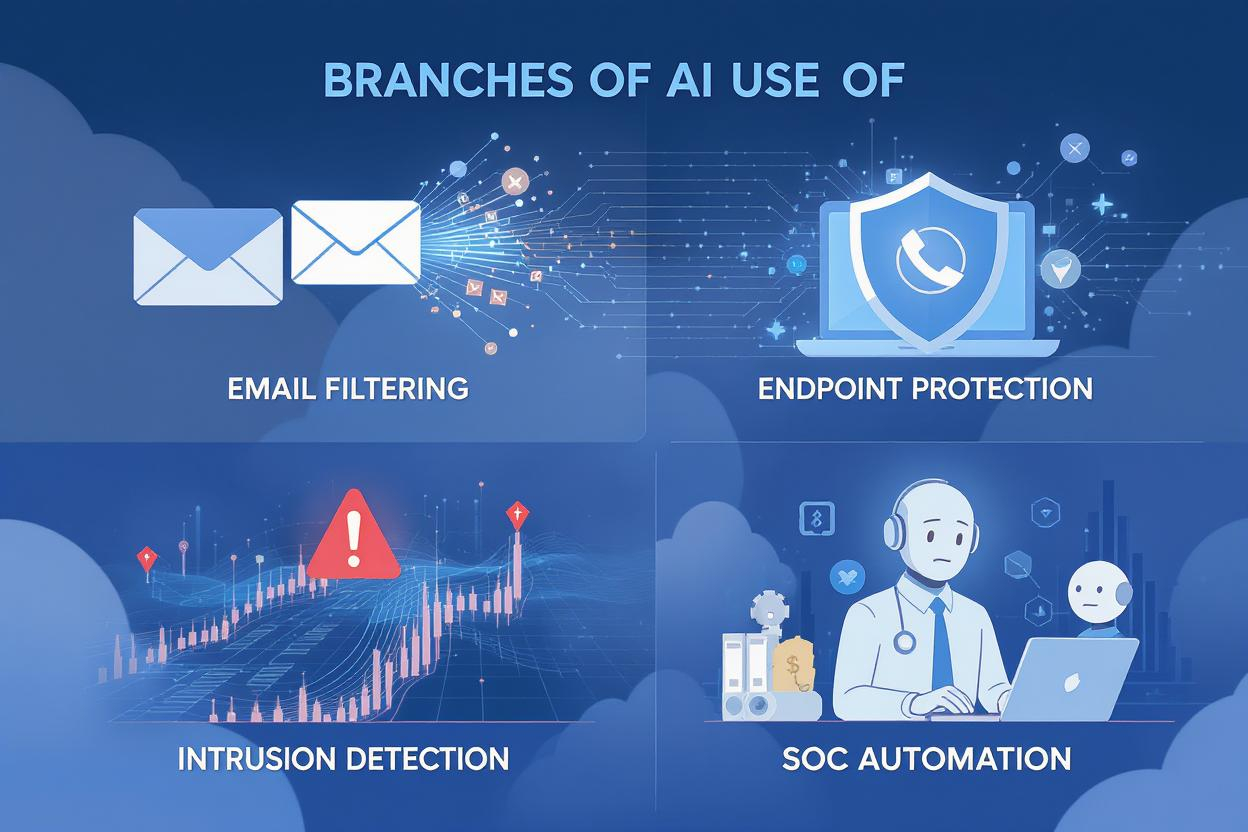AI in Cybersecurity: The Future of Digital Threat Detection

Today, as technology keeps growing quickly, it’s getting harder to stay safe online. From fake emails and computer viruses to smart new tricks hackers use, online dangers are not only increasing but also getting sneakier. This is where AI in Cybersecurity comes in. It's a new way of fighting back by changing how we find and stop cyberattacks.

Many of us have seen scary emails in our inbox or junk folder. They say that someone has our personal information and will share it if we don’t send them $25,000 in cryptocurrency to a secret wallet. We may laugh and delete it, but deep inside, it makes us think. Can someone really do that to me through my Gmail? Surely not… right?
This article explains how artificial intelligence is becoming a big part of online safety. It shows how it's changing cyber protection and why it’s now something we can’t ignore.
The Growing Scale of Cybersecurity Threats
The internet connects almost everything now. But this also gives more chances for cybercriminals to attack. Every day, businesses face thousands of threats. These include dangerous links, tricky messages, stolen data, and even inside workers causing harm. With more people working from home, using cloud systems, and smart gadgets, the chances of being attacked are higher than ever.
A 2025 CyberEdge report says over 86% of companies had a cyberattack in the last year. That’s a huge number. The real problem is that the old ways of protecting systems—like using only signatures or doing everything manually—don’t work as well anymore.
That’s why we need AI in Cybersecurity. It’s not here to replace everything but to make current tools better.

What Is AI in Cybersecurity?
AI in Cybersecurity means using machine learning, natural language tools, and other smart systems to find online dangers faster than older tools. These AI tools use past data, find patterns, and act fast, sometimes even before a human notices something is wrong.
Instead of only looking for known attacks or depending on people, these systems keep learning and reacting to new problems.
AI can do many things like:
- Anomaly Detection: It finds strange activity that might mean something bad is happening.
- Behavioral Analysis: It checks how people or devices usually act and spots anything different.
- Threat Intelligence: It collects and studies information from different places to warn about future threats.
- Automated Response: It can take steps to protect systems right away, without waiting for a person.
Because of this, artificial intelligence in IT security helps teams act faster and smarter to stop attacks before they become serious.
Why AI Is the Future of Digital Threat Detection
1. Real-Time Threat Detection
Old tools need to know about a threat before they can stop it. If a hacker uses a new trick (called a zero-day attack), the system may not see it.
AI is different. It can look at tons of data all the time and find strange behavior right away. For example, if someone logs in from a new country late at night to open private files, AI can block it, even if it's never seen that threat before.
2. Adaptive Learning
AI can learn and get better as it sees more data. That means it can spot more real threats and make fewer mistakes. The more it works, the smarter it gets.
On the other hand, old systems need people to keep updating them. And cyberattacks change faster than those systems can catch up.
3. Enhanced Cyber Risk Management
To stay safe, companies need to spot risks before they do damage. AI can do that by studying threats in real time.
With AI tools, companies can see where attacks might happen, get early warnings, and know how serious each threat is. This helps teams focus on what matters most.
AI Use Cases in Cybersecurity

1. Email Filtering and Phishing Detection
Fake emails (phishing) still trick a lot of people. AI tools can study the message, who sent it, and past patterns to block these emails early.
AI understands the message tone using natural language tools, so it knows when an email might be dangerous—even better than regular spam filters.
2. Endpoint Protection
More devices are connected to company networks now. That means more chances for danger. AI-powered antivirus tools watch what devices are doing. If something like a ransomware attack starts, it can stop it right away.
If a virus starts locking files fast, the AI tool can block it or shut down the device to stop it from spreading.
3. Intrusion Detection and Prevention Systems (IDPS)
These systems check all the network traffic. AI helps spot anything strange—like stealing data or sneaking into another part of the system.
Since AI can look at lots of data quickly, it works well in busy networks.
4. Security Operations Center (SOC) Automation
Security teams get tons of alerts every day. Many of them are not serious. AI helps by sorting through the noise and pointing out real threats.
By using AI in SOC work, companies can act faster, keep their teams less stressed, and catch big attacks more easily.
Challenges of Implementing AI in Cybersecurity
Even though AI is helpful, there are some problems too:
1. Data Quality and Bias
AI only works well if it’s trained on good data. If the data is wrong or unfair, it might miss real problems.
That’s why it’s important to use high-quality data and make sure AI tools are built the right way. It helps them solve problems better and faster.
2. Complexity and Cost
Bringing AI into current systems isn’t always easy. It can need special equipment, new programs, and trained workers.
Small businesses may find it hard to afford and use these tools.
3. Adversarial AI
Hackers also use AI to break systems. They create smart tricks to fool the AI into thinking nothing is wrong. This is called adversarial AI.
For example, they may change small parts of their actions to avoid being noticed by the AI.
The Role of Human Oversight
Even with strong artificial intelligence in IT security, people are still important. AI helps with fast and boring tasks, but people think, understand, and give meaning to problems.
Together, AI and people make the best team—AI brings speed, people bring wisdom. This balance helps make systems stronger and safer.
Looking Ahead: AI and the Future of Cybersecurity

What’s next for AI in cybersecurity?
- Greater Automation: More tools will stop small attacks on their own without waiting for a person. This helps stop damage early.
- Explainable AI: As more people use AI, they’ll want to know why it makes certain decisions. This helps build trust and follow rules.
- AI-Driven Cybersecurity Platforms: Companies now offer full systems with AI in everything—from firewalls to logins to threat hunting.
- Global Threat Intelligence Networks: AI will help collect and study threat info from around the world to stop big attacks faster.
In conclusion:
Online threats are not just a tech issue—they can hurt businesses, break rules, and harm reputations. As hackers get better, old tools can’t keep up.
That’s why AI in cybersecurity is now a must.
By using artificial intelligence in IT security, companies can spot and stop dangers faster. Even though there are some challenges, the benefits are big: quicker defense, better risk control, and systems that are ready for the future.
As we move into a more digital world, AI will help guard our data, systems, and way of life. It’s smart, fast, and gives us more peace of mind. Using AI in cybersecurity is the smart way to build a safer tomorrow.
TechLists continues to explore the latest in AI-powered tools, best tech gadgets, and future technology trends to help you stay ahead in the digital age.
You can explore more tech blogs like this at our official content hub:
https://linktr.ee/techlists, where you can check blogs written related to technology.
Subscribe to the Markets Outlook newsletter
Related Posts

Ledger Nano S Plus Review: Simple, Secure & Affordable Crypto Storage















.svg)
